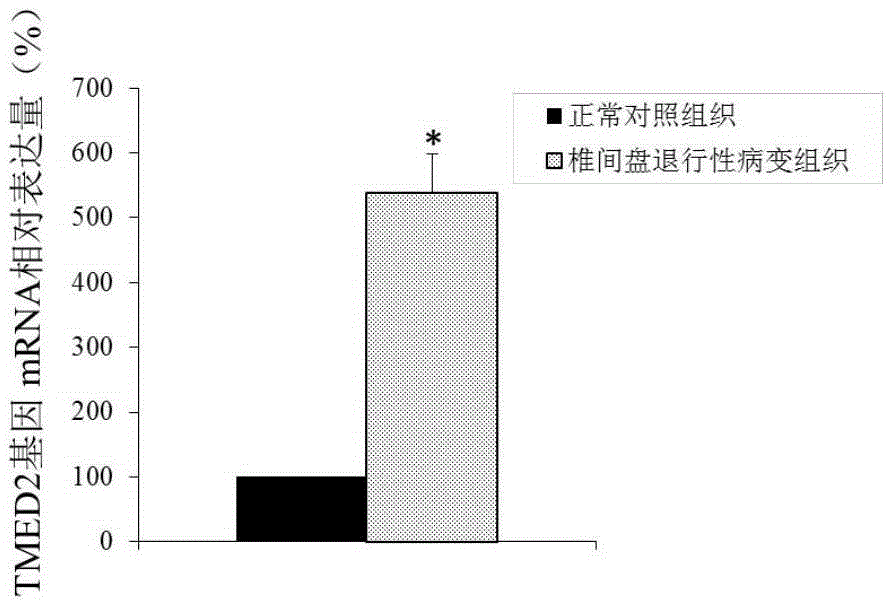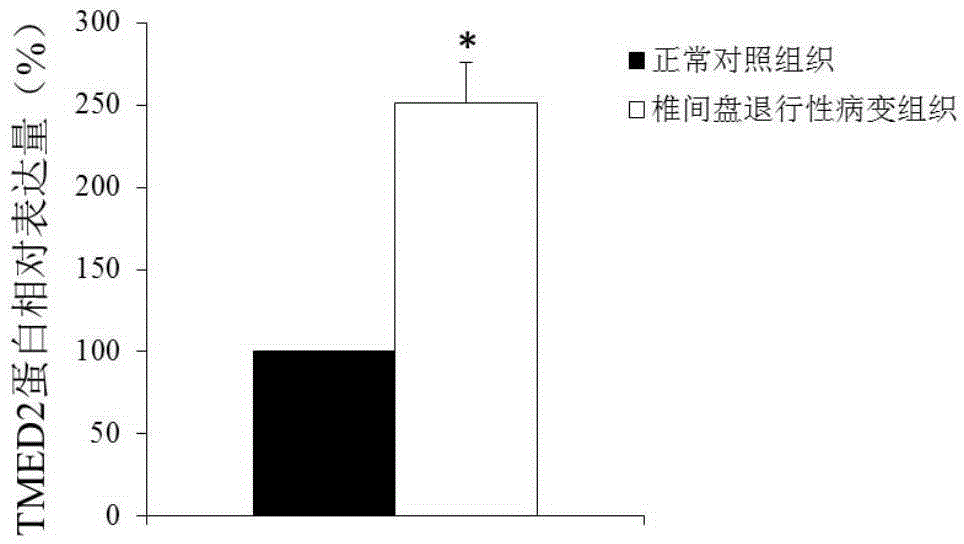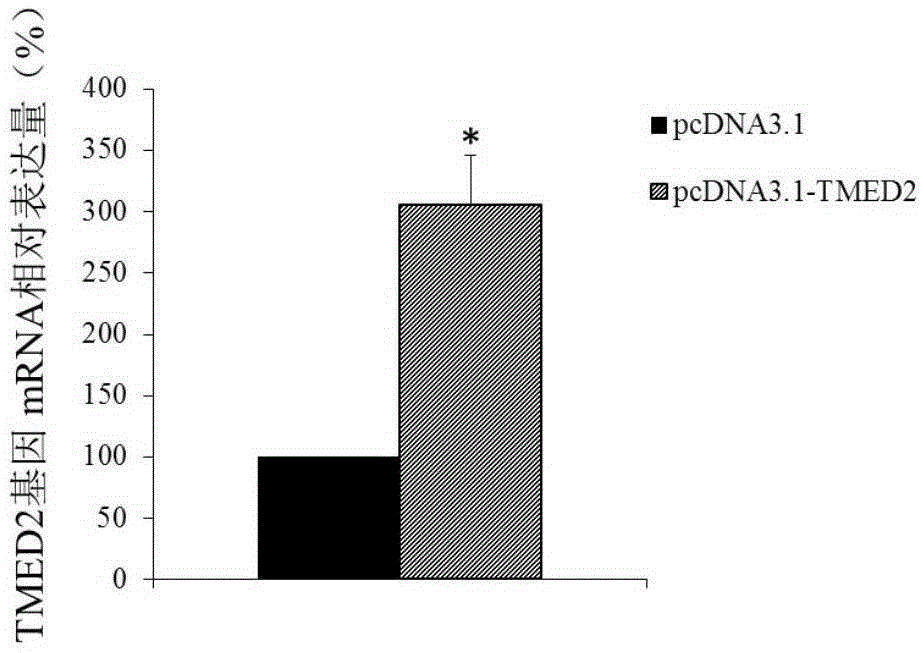Intervertebral disc degenerative change diagnosis and treatment marker
A technology for degenerative diseases and intervertebral discs, applied in disease diagnosis, gene therapy, bone diseases, etc.
- Summary
- Abstract
- Description
- Claims
- Application Information
AI Technical Summary
Problems solved by technology
Method used
Image
Examples
Embodiment 1
[0058] Example 1 Differences in expression of TMED2 gene in normal control tissue and intervertebral disc degenerative disease tissue
[0059] 1. Sample collection
[0060] Five normal human intervertebral disc tissues were obtained from patients with spinal burst fractures caused by trauma. The intervertebral disc tissues of 5 patients with degenerated intervertebral disc disease were collected, with an average age of 75 years. According to the Gr1es 〔5〕 scoring standard, all of them were severely degenerated. The samples were collected with the consent of the patients and their families.
[0061] 2. Extraction of nucleus pulposus tissue
[0062] Normal nucleus pulposus tissue: The normal intervertebral disc tissue is nearly completely removed during the operation, and the peripheral white fibrous ring and the jelly-like nucleus pulposus tissue in the center can be seen. Soak the intervertebral disc in normal saline containing double-antibody (penicillin-streptomycin) for ...
Embodiment 2
[0085] Example 2 Large sample verification of differentially expressed genes
[0086] 1. Sample collection and tissue processing
[0087] 40 normal human intervertebral disc tissues were obtained from patients with spinal burst fractures caused by trauma. The intervertebral disc tissues of 40 patients undergoing surgery for degenerative disc disease were collected, with an average age of 75 years. According to the Gr1es 〔5〕 scoring standard, all of them were severely degenerated. The samples were collected with the consent of the patients and their families.
[0088] The extraction of nucleus pulposus tissue was the same as in Example 1.
[0089] 2. Detection of differential expression of TMED2 gene at the transcriptional level
[0090] 2.1 Extraction of total tissue RNA
[0091] Step is with embodiment 1.
[0092] 2.2 Reverse transcription
[0093] The reverse transcription of RNA was carried out using the reverse transcription kit of TAKARA company.
[0094] 2.3 QPCR ...
Embodiment 3
[0121] Example 3 TMED2 gene overexpression
[0122] 1. Construction of TMED2 gene expression vector
[0123] Amplification primers were designed according to the coding sequence of the TMED2 gene (as shown in SEQ ID NO.1). The coding sequence of the full-length TMED2 gene was amplified from the cDNA library of adult fetal brain (clontech company, catalog number: 638831). The obtained recombinant vector pcDNA3.1-TMED2 was connected to the eukaryotic cell expression vector pcDNA3.1 double-digested with enzymes BamHI and XhoI for subsequent experiments.
[0124] 2. Cell culture
[0125] Put the intervertebral disc nucleus pulposus tissue into a 100ml beaker filled with 10ml2% type II collagenase, and stir it with a magnetic stirrer for about 60 minutes. After the tissue is completely dissolved, centrifuge at 1000r / min for 10 minutes, suck out the supernatant, gently blow off the cells with 1ml of DMEM medium containing 10% fetal bovine serum, suck it into a 50ml culture bottle...
PUM
 Login to View More
Login to View More Abstract
Description
Claims
Application Information
 Login to View More
Login to View More - R&D
- Intellectual Property
- Life Sciences
- Materials
- Tech Scout
- Unparalleled Data Quality
- Higher Quality Content
- 60% Fewer Hallucinations
Browse by: Latest US Patents, China's latest patents, Technical Efficacy Thesaurus, Application Domain, Technology Topic, Popular Technical Reports.
© 2025 PatSnap. All rights reserved.Legal|Privacy policy|Modern Slavery Act Transparency Statement|Sitemap|About US| Contact US: help@patsnap.com



